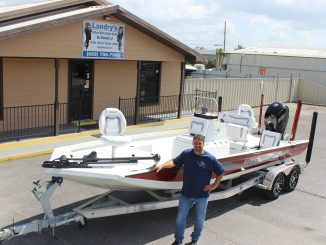
Only 8 foster homes in St. Charles Parish
On Dec. 29, a pile of unopened, nicely-wrapped gifts remained beneath a Christmas tree in the living room of Brandi and Stephen Cortez’s Hahnville home.
“Those are for Arthur,” Brandi said.
The Cortezes hoped Arthur might stay with them forever after the two fostered the child for 14 months. In November, Arthur returned to the custody of his father and, in spite of a verbal agreement to meet with the child again to give him his presents, the Cortezes haven’t heard back from Arthur or his father.
“You try so hard to keep your guard up because you don’t know what’s gonna happen,” Brandi said. “But it’s inevitable…it’s not fair to them and you can’t help but let it go.”
As a certified foster family, the Cortezes’ struggles are shared by the fewer than 10 foster homes throughout St. Charles Parish. According to Tina Vial, spokeswoman for the Department of Child and Family Services in the River Parishes, there are roughly twice as many children in need of foster homes as there are foster parents in St. Charles Parish.
Since becoming certified about a year and a half ago, the Cortezes have welcomed five different foster children into their home.
The Cortezes became foster parents due, in part, to their own inability to have children. The couple at first attempted to enter into an agreement with a pregnant friend to adopt her child. After that child was lost to a stillbirth, the couple looked into the foster system.
“We decided that if we can change the lives of some children, let’s do it,” Stephen said.
A series of seven, once-weekly courses with the Department of Child and Family Services were merely one component to the Cortezes’ certification. Three home visits were made throughout the training, which included a laundry list of safety requirements. Some were easy to follow, such as keeping medicine on the top shelf. Others, such as setting the water heater to a certain temperature, were not so intuitive.
“If you live in an upstairs apartment, you have to have a rope ladder,” Stephen said with a chuckle.
The couple said they also submitted to background checks and had to provide six non-familial references. A full medical history, spanning generations, was needed. For Brandi, whose mother is a nurse, getting her medical history was easier than it was for Stephen.
“He wound up having to call his mom and asking ‘what’s some of our family history on this?’’ laughs Brandi. “Finding out some information was more difficult than others, but most of it is just stuff you have to look up.”
In September 2012, the Cortezes received certification to care for up to five foster children in their home. Only two hours after receiving that certification the Cortezes received their first placement—1-year-old Arthur.
“The minute I saw Arthur through the window of the van, I fell in love with him,” Brandi said.
Though foster parents receive first preference in the event that a child is put up for adoption, it is still the goal of the state to reunite the child with their biological parents. Every parent, including Arthur’s father, has a plan developed to reunite them with their children in a year. If the parent follows the plan and meets the milestones, the more likely it is that the child will be returned to their custody. All of this, however, is at the discretion of the judge.
The only knowledge foster parents get about this reunification process is what they discover while attending court hearings. For Arthur’s father, the court hearings were held in Hahnville.
“If you ask me, I don’t think Arthur’s biological father really even finished his case plan when he got Arthur back,” Brandi said.
Brandi cites the general need for clean drug tests, stable housing and a job retained for six months prior to the child’s return. Brandi asserts that in the hearing they went to in Hahnville, these conditions may not have been met.
In spite of this, the couple said they understand—and support—the goal of reuniting children with their biological parents, and are happy to offer whatever assistance they can.
During Arthur’s stay, the couple received siblings Janet and Madison. Brandi quit her job to devote all her time to raising the children. As of the end of the year, the two toddlers have spent nearly seven months with the Cortezes.
By May, the two will have a permanency review hearing, which will likely determine whether the girls can be adopted. Until that time, the couple has to balance the need to provide a loving home with the possibility that the children may leave.
“On the first day, Janet comes sits next to me and said, ‘Can I call you daddy?’” Stephen said.
The couple said that the girls’ mother’s case is being handled out of the Houma courthouse, and that the experience has been significantly different from that of Arthur’s case. The Cortezes said they recently had dinner with Janet and Madison’s biological grandmother, who is caring for the girls’ two older sisters.
“You fall in love and that’s it, what do you do? That’s not the difficult part,” Brandi said. “The difficult part is the not knowing, sometimes getting the run around and things not going the way you think you want them to go.”
Editor’s note: the names of the children have been changed in order to protect their identities.




Be the first to comment